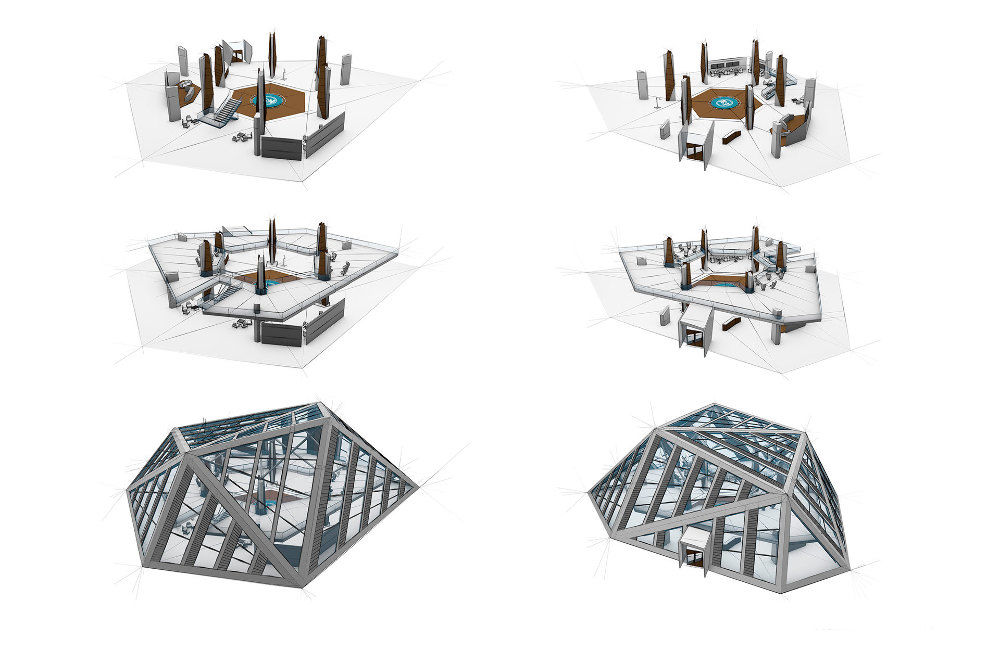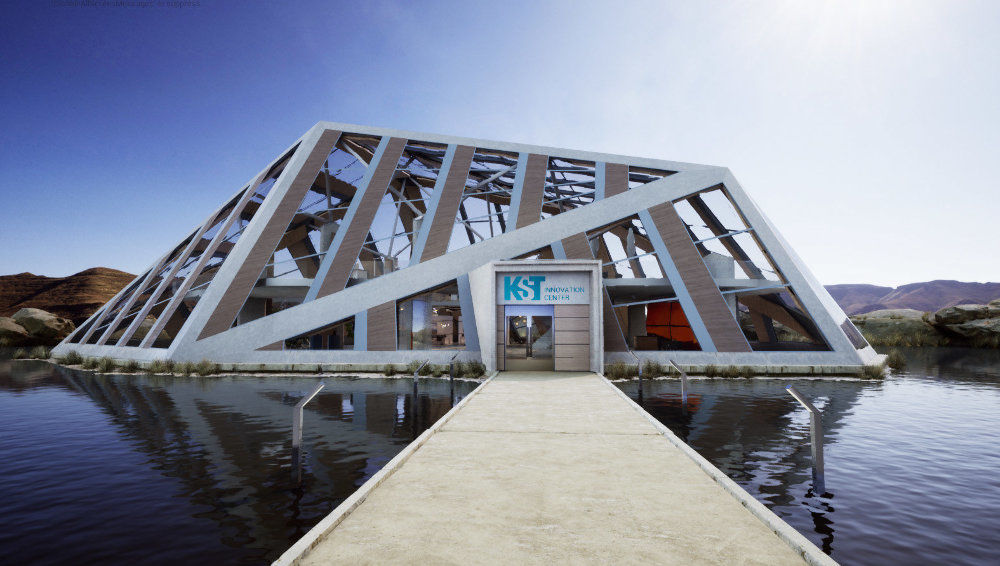Since 2019 Mondlicht Studios is cooperating with KST Moschkau, established experts in AV broadcasting solutions, who offer the full service from planning to realizing projects from start to finish. Together they are currently developing the next generation of virtual studios.
One of the most striking highlights of the IBC conference in Amsterdam was the stand of Panasonic Business. Among the products and solutions, presented by the company, Virtual Studio, created by Mondlicht Studios in collaboration with KST Moschkau and Cube in Cube, undoubtedly stands out. We decided to find out more about the project to understand how virtual spaces are created.
Since 2019 Mondlicht Studios is cooperating with KST Moschkau, established experts in AV broadcasting solutions, who offer the full service from planning to realizing projects from start to finish. Together they are currently developing the next generation of virtual studios.
Usually, virtual spaces consist of one-two rooms, but the team decided to create the whole building with the surrounding environment for KST Moschkau GmbH. The building is divided into zones: reception, studio, presentation room, lounge zone, etc. All the zones are logically placed and developed to make the place more realistic.
“One of my favorite things about this Virtual Studio is that you can actually enter the building. This small detail makes it so much more believable. Virtual Studio for KST Moschkau GmbH is different from other virtual spaces because it gives you the feeling of presence”, – says Maksym Khirnyy, CEO at Mondlicht Studios.
The adventurous project began from the German word “Bodenständig”, which means that space should be as realistic and functional as possible. The limitation helped the team to find the right balance between efficiency and elegance to create a beautiful, but practical environment.
“We began to discuss the concepts right on our way home from the meeting. Trying to find the right style we were thinking about suitable references. Airports, museums of contemporary art and showrooms for automotive brands became an endless source of inspiration for us” – tells Maksym.
But design is only one part of the job, another – to realize ideas and create an elegant space ready to be rendered in 4K in real-time. To bring such complex projects to life and push the boundaries beyond imagination it’s crucial to gather the right team ready to any challenges.

“Every VR/AR project is unique and has different hardware and software limitations. For some projects, you may use powerful workstations and do not pay much attention to efficiency and performance. In other projects, you may face the necessity to launch your application on mobile devices, which are not powerful enough. In spite of all possible limitations, the application must work fast, smooth and efficient. Otherwise, it won’t gain popularity”, – says David Schäfer, CEO at Mondlicht Studios.
The main obstacle in creating such projects is to overcome software limitations. Even though nowadays we can create almost everything with the help of computer graphics, limitations bring us back to earth. To realize the idea, teams usually have to think about creative solutions and invent new workflow right in the middle of production.
“Starting in 2016, our company founders have been developing a workflow to deliver the highest quality in low poly data, in the first place for automotive advertising. To show a product like a car in a real-time environment, you need a data set, that is lightweight and still looks as beautiful as the original fully, detailed high poly data. That experience helped us to develop a workflow that can be used in any VR/AR project”, – says David.
One more challenging part of the production was connected with the flexibility of space. As one can notice, the user has a possibility to adjust the interior to his or her needs, change the lighting, add video, images or CG elements in the space, and so on.

“Virtual environments have to be flexible. Yes, you will have to work much more to adjust all the materials and predict how they are going to be combined, especially in terms of different lighting. However, this approach allows to get multi-functional space, which can be used for a long time and for different purposes”, – says Maksym.
Virtual Spaces are getting more complex, flexible and accessible. We can create photorealistic environments for film, television, broadcasting or advertising using VR/AR technologies. Every day we are getting news about brands getting into this new way of advertising and presenting the products. The question is: are physical spaces have any chances against the possibilities of virtual reality?







